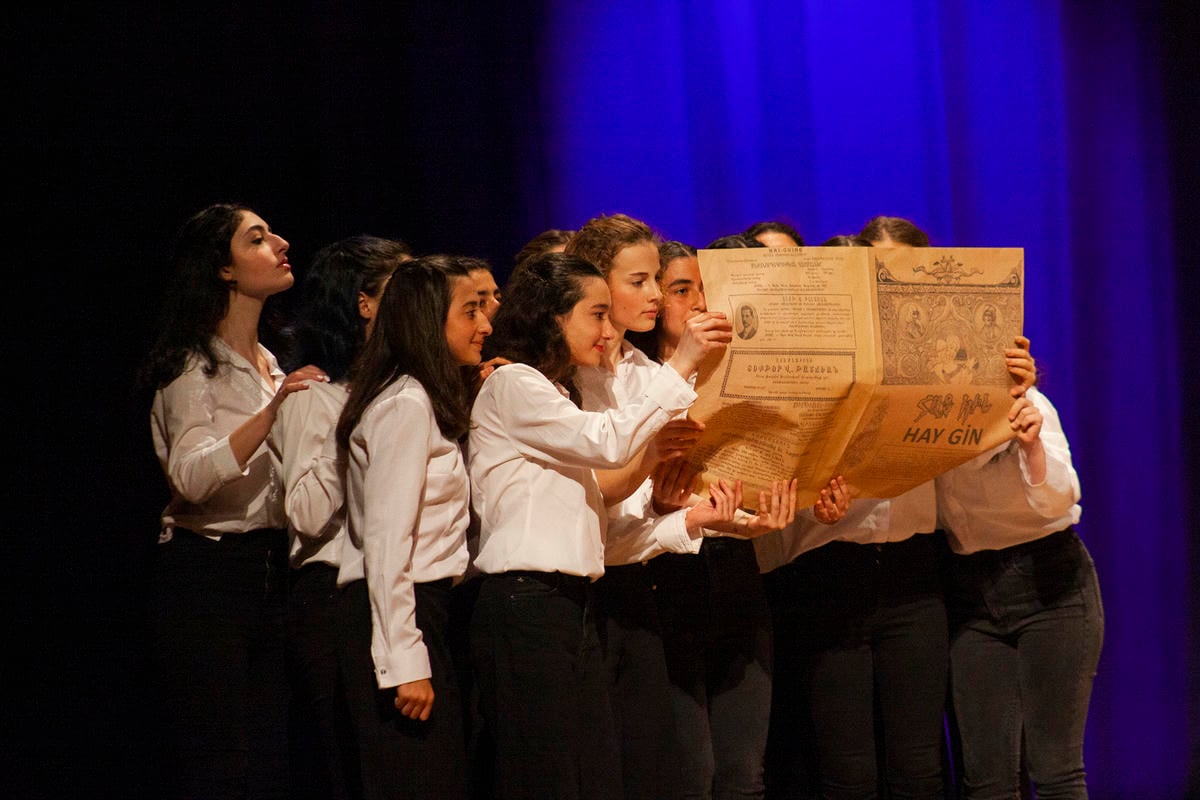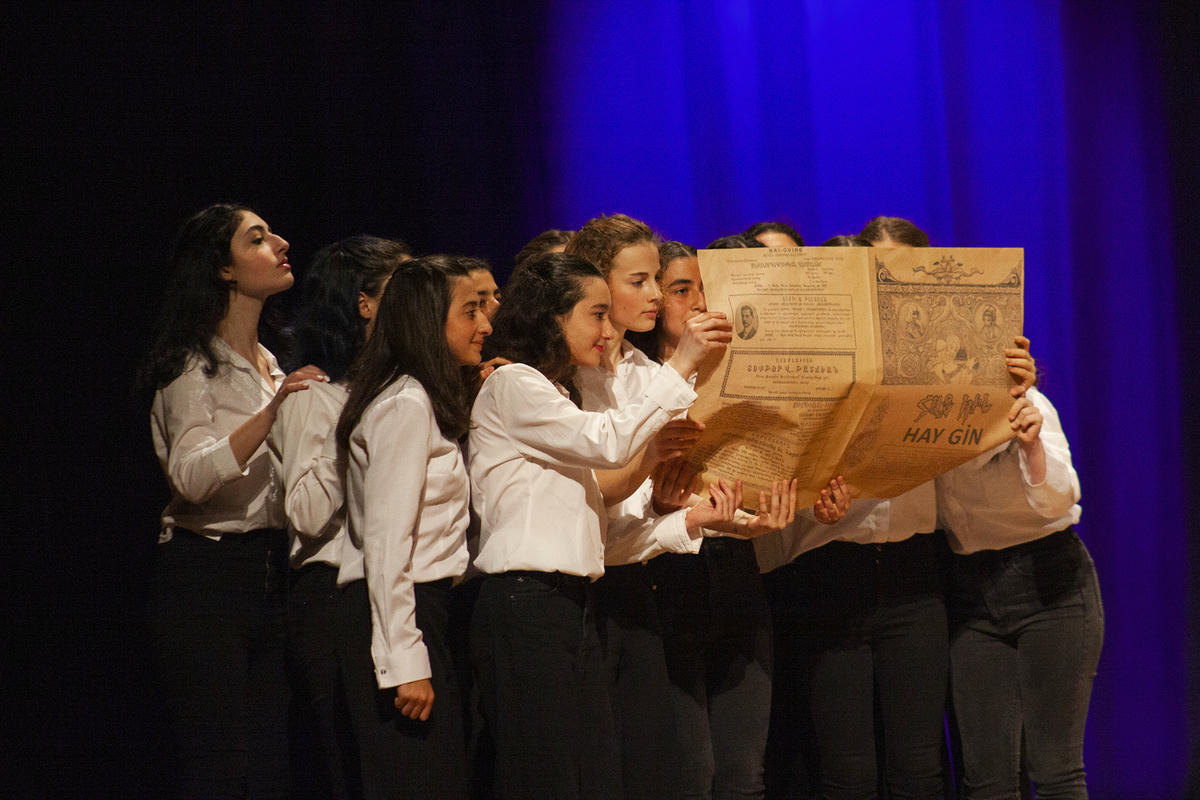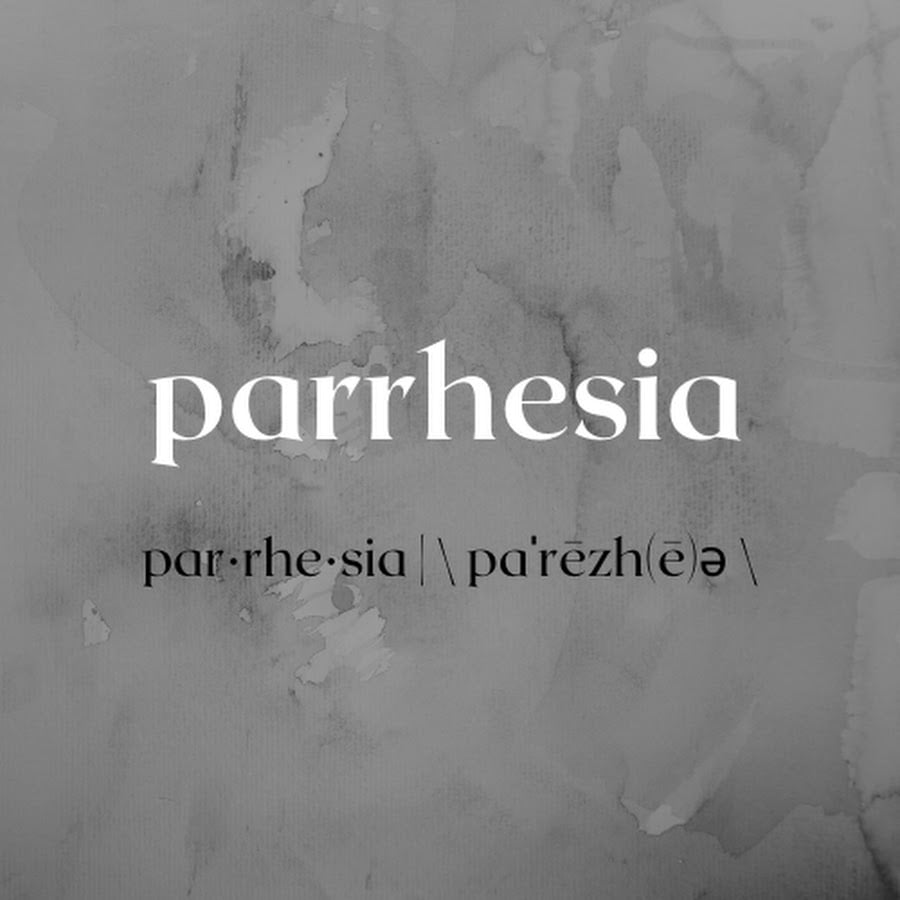About the ‘Hay Gin’ Performance


AYLİN VARTANYAN
Last month, we had the chance to watch Getronagan High School students' show 'Hay Gin', which was first staged in June 2023. Even though our article came a little late, remembering that March 8, International Women's Day is approaching, we thought that it would be meaningful to commemorate the women who lived in Turkey and made valuable contributions to Armenian society.
'Hay Gin' is more than a high school performance: it is a revival that makes the position of one hundred Armenian women, who thought, wrote, educated and produced in the social memory of this land, visible. I specifically use the expression 'revival' because most of the Armenian women mentioned were just a photo and a name for us for a long time. 'Hay Gin', a meticulously written work by Silva Kuyumcuyan, the principal of Getronagan High School, was transformed into a stage work with the amazing contribution of the students, teachers and graduates of the high school. The work features the stories and contributions of Armenian women from different professional groups, who are about to be lost in the void of history. The contribution of these Armenian women to cultural life came to life again before our eyes. Silva Kuyumcuyan explains the purpose of the study as follows: "To encourage today's student, the Armenian woman, with examples from the past and allow her to question her status in social life."
As many of you may remember, the absence of Armenian women in the feminist narrative in Turkey was brought to the agenda with the life and struggle stories of five Armenian feminist women in the book 'A Cry for Justice' (Aras Yay., 2006), compiled by Melissa Bilal and Lerna Ekmekçioğlu, graduates of Getronagan High School. Seventeen years after the publication of this book, the show 'Hay Gin' reminds us of the existence and contributions of women as educators, journalists, artists, spiritual leaders, scientists and academics to this narrative and brings them out of the texts and onto the stage. The importance of intergenerational ties should also be emphasized here. Melissa Bilal and Lerna Ekmekçioğlu, who participated in the show with video footage, talked about the decisive role of being from Getronagan High School and being introduced to Armenian women thinkers and writers by Silva Kuyumcuyan, which later influenced their academic work. "What kind of women would we have been if we had known about the stories of these women when we were growing up?" is a question that I am sure many Armenian women ask today, as Ekmekçioğlu shared in her article "In the Footsteps of Zaruhi Bahri" in the booklet 'Hay Gin' that accompanied the performance.
 PHOTO: İşhan Erdinç
PHOTO: İşhan ErdinçAs a women’s collective, we try to emphasize the importance of learning through embodiment and putting knowledge into practice, as much as the value of intellectual production. The embodied consciousness learning model is a pedagogical approach that focuses on non-mental factors and emphasizes the importance of the body and emotions. In this model, which also includes senses and motor skills, there is an invitation to produce and internalize knowledge through a bodily approach in addition to the cognitive domain.
Getronagan students live each female character not only through the text, but also by dressing, speaking, acting and communicating like that character. In this context, the show 'Hay Gin' also inspires us as a pedagogical model. The efforts of Banu Açıkdeniz, who choreographed the show and the dances, and stage directors Serda Arslan and Boğos Çalgıcıoglu are invaluable in this sense. The selections of Diana Bulduk and Sarin Akbaş, who prepared the informative presentations projected at the back of the stage throughout the show, help the audience to connect the pieces of the six-part show and understand the historical perspective.
For us, one of the most impressive aspects of the show was the excitement and vibrancy with which the young high school women told the stories of Armenian women of the past. It was an unforgettable experience to see these women, most of whom are deceased, come to life before our eyes with the passionate performance of young students, and to see these forgotten lives, each of which is a lesson in itself, come out of their silent corners and meet the audience of all age groups. Our endless thanks to everyone who contributed to bringing this silenced and repressed historical narrative to the present day.



